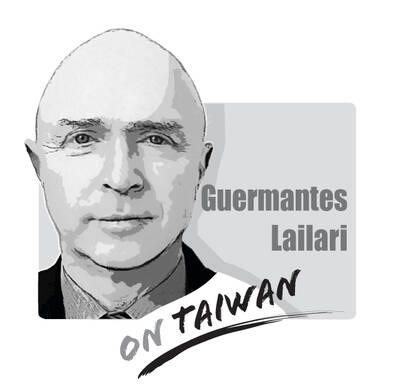Media said that several pan-blue figures — among them former Chinese Nationalist Party (KMT) chairwoman Hung Hsiu-chu (洪秀柱), former KMT legislator Lee De-wei (李德維), former KMT Central Committee member Vincent Hsu (徐正文), New Party Chairman Wu Cheng-tien (吳成典), former New Party legislator Chou chuan (周荃) and New Party Deputy Secretary-General You Chih-pin (游智彬) — yesterday attended the Chinese Communist Party’s (CCP) military parade commemorating the 80th anniversary of the end of World War II.
China’s Xinhua news agency reported that foreign leaders were present alongside Chinese President Xi Jinping (習近平), such as Russian President Vladimir Putin, North Korean leader Kim Jong-un, Cuban President Miguel Diaz-Canel, Belarusian President Alexander Lukashenko and Myanmar’s junta chief Min Aung Hlaing.
Birds of a feather flock together. All throughout the world — regardless of nationality or ethnicity — the only people willing to attend a military parade with Xi are dictators. Yet these Taiwanese pan-blue figures also chose to stand alongside a dictator.
According to the historical perspective long upheld by the KMT, the victory in the war of resistance against Japan was achieved by the Nationalist government and military, led by Chiang Kai-shek (蔣介石). Not only was the CCP not the main force that resisted the Japanese invasion, it often hindered the KMT. Then-CCP leader Mao Zedong’s (毛澤東) “7-2-1 strategy” — placing 70 percent of the focus on developing strength, 20 percent on government and 10 percent on resisting Japan — perfectly summarizes the party’s strategic intentions at the time.
These pan-blue political figures might worship Chiang’s spirit tablet at home and love paying respects at his mausoleum during elections to boost their visibility, but the moment the CCP calls, they change their tune. Such behavior can only be described as extreme opportunism.
The CCP has not ruled out the possibility of using military force against Taiwan. In recent years, it has continued to pressure Taiwan — circling it with military aircraft and naval vessels, and conducting military drills. The troops, strategic weapons and equipment showcased in Beijing are all tools the CCP use to intimidate Taiwanese. If these political figures still insisted on participating under such circumstances, can they be considered true Taiwanese?
Huang Wei-ping works in public service.
Translated by Kyra Gustavsen

Chinese state-owned companies COSCO Shipping Corporation and China Merchants have a 30 percent stake in Kaohsiung Port’s Kao Ming Container Terminal (Terminal No. 6) and COSCO leases Berths 65 and 66. It is extremely dangerous to allow Chinese companies or state-owned companies to operate critical infrastructure. Deterrence theorists are familiar with the concepts of deterrence “by punishment” and “by denial.” Deterrence by punishment threatens an aggressor with prohibitive costs (like retaliation or sanctions) that outweigh the benefits of their action, while deterrence by denial aims to make an attack so difficult that it becomes pointless. Elbridge Colby, currently serving as the Under
The Ministry of the Interior on Thursday last week said it ordered Internet service providers to block access to Chinese social media platform Xiaohongshu (小紅書, also known as RedNote in English) for a year, citing security risks and more than 1,700 alleged fraud cases on the platform since last year. The order took effect immediately, abruptly affecting more than 3 million users in Taiwan, and sparked discussions among politicians, online influencers and the public. The platform is often described as China’s version of Instagram or Pinterest, combining visual social media with e-commerce, and its users are predominantly young urban women,
Most Hong Kongers ignored the elections for its Legislative Council (LegCo) in 2021 and did so once again on Sunday. Unlike in 2021, moderate democrats who pledged their allegiance to Beijing were absent from the ballots this year. The electoral system overhaul is apparent revenge by Beijing for the democracy movement. On Sunday, the Hong Kong “patriots-only” election of the LegCo had a record-low turnout in the five geographical constituencies, with only 1.3 million people casting their ballots on the only seats that most Hong Kongers are eligible to vote for. Blank and invalid votes were up 50 percent from the previous
Alarm bells over a “hollowing out” of Taiwan’s semiconductor industry and US demands for “protection money” have fueled a panic over Taiwan. To understand how misplaced these fears are, consider the movements of global technology giants. Nvidia Corp CEO Jensen Huang (黃仁勳), Advanced Micro Devices Inc (AMD) CEO Lisa Su (蘇姿丰) and Taiwan Semiconductor Manufacturing Co (TSMC) chairman C.C. Wei (魏哲家) could undoubtedly understand the situation best, and they continue to make key investments in Taiwan. They do not make decisions on a whim. They are the architects of global computing power strategy and possess the highest levels of industry knowledge. No